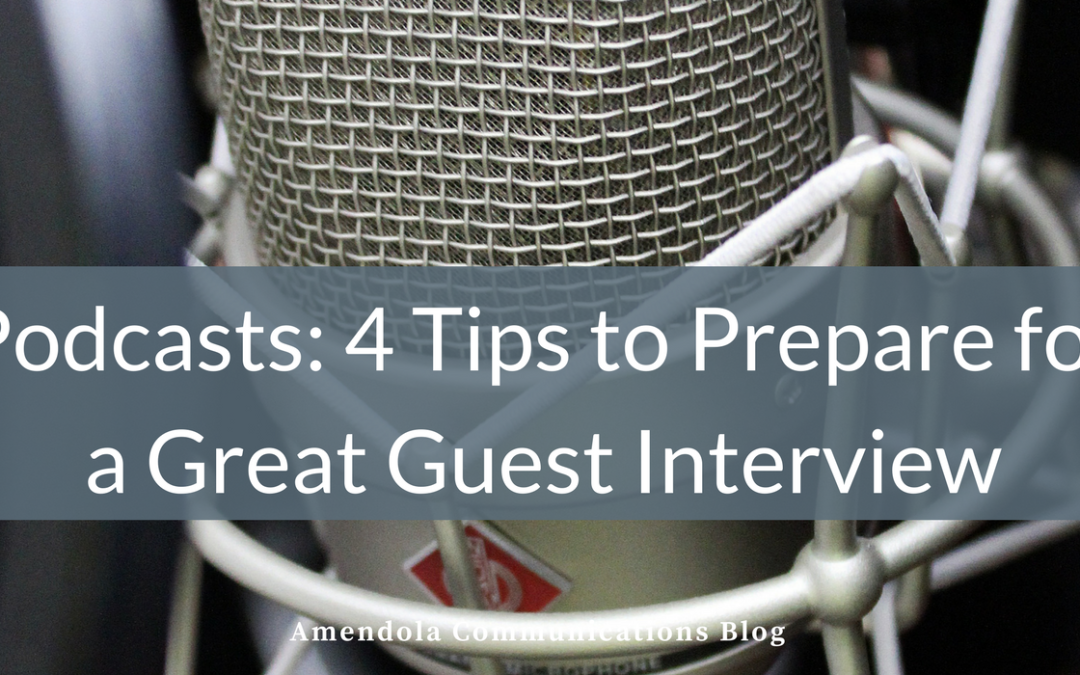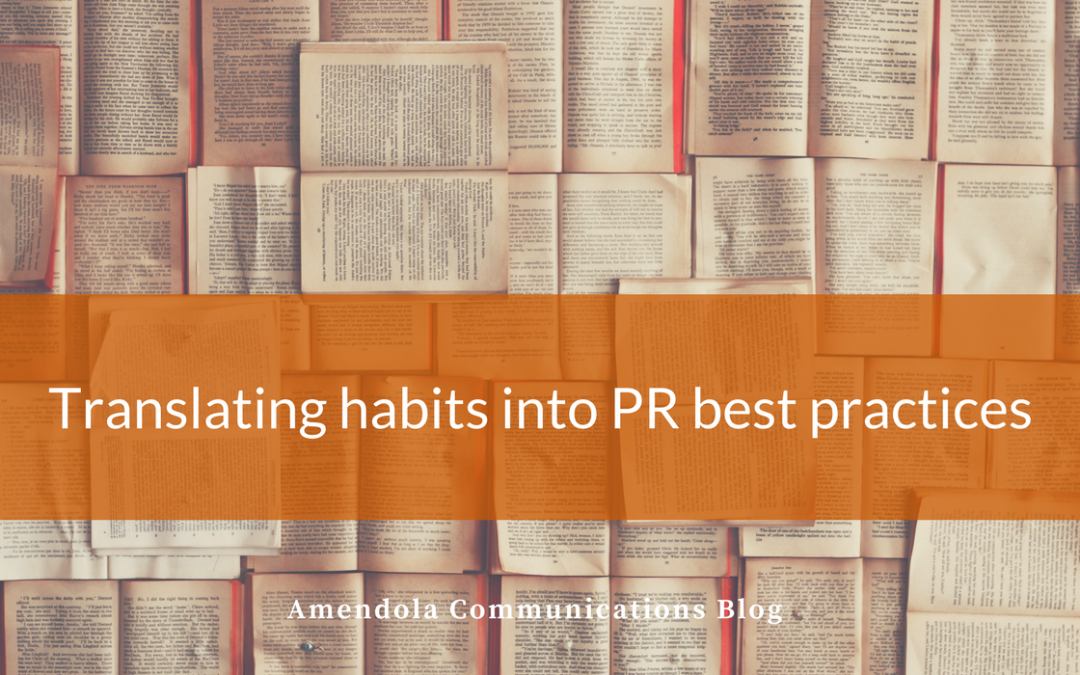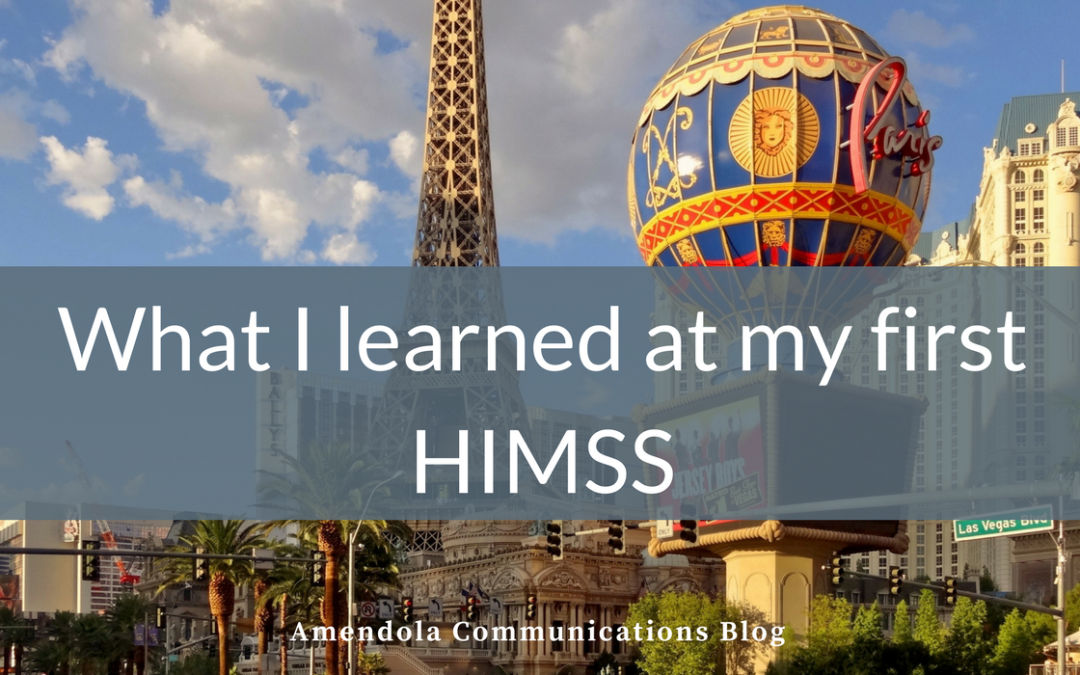
by Heather Caouette | May 9, 2018 | Blog
Everyone knows that success is not created in a vacuum. Teamwork permeates everything we do. In sports, we know the names of some standout players, but it is how they work together that delivers wins.
In public relations and marketing agencies, clients depend on team members to not only know their craft but serve as an extension of the marketing teams. How individual stars execute as part of a larger, cross-functional team is where you will really see results.
What do you need to build a great team? Some of the best groups share a few key elements.
Shared Goals
Being part of a team is entering into a relationship, so remember your parents advice find people with similar goals. Working toward the same objectives builds comradery as well as teamwork. Clearly stating those goals ensures everyone is on the same page.
Complementary Strengths
Having a group of people who are carbon copies of each other, for those of you that remember print forms, is not only boring. It stifles innovation. Remember what Winston Churchill said: “If two people agree on everything, one of them is unnecessary.”
You want people with different experiences and assets to round out your team and bring ideas that you may not have come up with on your own. Identify what characteristics are needed to succeed. Know your strengths and recruit people that have different ones. Then, offer enough autonomy to let each member’s expertise shine.
Communication
Proper communication is the backbone of every good collaboration, so it must take into account people’s personal preferences. Colleagues can each react differently to how information is presented, so it is important to understand the nuances of your team.
Proactive feedback is also important to keeping the team on track. Don’t wait until there is a problem keep responses consistent to prevent issues. The ability to brainstorm, strategize and work through challenges is the result of good team communication. There is also an added bonus created from this trust.
Transparency
This takes communication to the next level. For teamwork to thrive, each member needs to execute off of the same playbook. Ensure your PR and marketing teams are in the know about your organization functionality in development, your key drivers, business decisions motivators, and the skinny on your customers favorite features. This enables teams to proactively act in your best interest and deliver real results.
Individuals can certainly accomplish many tasks from the outside; however, it is like passing to the Patriots Rob Gronkowski the ball will be caught, but maybe not as gracefully. Expertise is not always enough. Transparency removes the handicap and creates synergies that deliver above and beyond your expectations, tapping into resources that will best guide your programs to reach your business goals.
Public relations and marketing are about building your brand in a way that supports overarching business goals creating thought leadership, increasing brand awareness, motivating behavior from select groups. Don’t get lost chasing tactics. Keep your objectives in sight and build the team that will get you there.

by Brandon Glenn | May 2, 2018 | Blog
Someday, you may be able to tell your grandchildren you lived through the golden age of podcasts.
From the humble beginnings of first being listed in iTunes in 2005 to the emergence of “Serial” as the medium’s first breakout star in 2014, podcasts have evolved from “the nichiest, wonkiest content platforms to a star-studded, self-contained media ecosystem with hundreds of millions of dollars in annual advertising revenue,” according to Wired.
Plenty of Americans have noticed. A report last year from Edison Research found that 112 million Americans had listened to a podcast, a jump of 11 percent from the prior year. Overall, 40 percent of Americans age 12 or older have listened to a podcast at some point, and the demographics don’t skew as youthful as you might think. For the first time, more Americans aged 25 to 55 were monthly podcast listeners than those aged 12 to 24, the report found.
Podcasting has, of course, made its way into healthcare, just as it has with other industries. Popular healthcare podcasts include TEDtalks Health, Harlow on Healthcare, Mayo Clinic Radio and Healthcare Tech Talk, just to name a few.
So there’s a fairly strong chance that you or an executive you work with will be asked to appear as a guest on a podcast if it hasn’t happened already. If and when that happens, following the tips below will help ensure a successful podcast, and hopefully a return invitation. (Many of these recommendations are applicable to media interviews, in general.)
- Research the podcast and host: In short, do your homework. Nothing says, “I have no clue why I’m doing this interview, but my public relations person told me I should, so here I am,” like an interview subject who doesn’t know the name of the media outlet (podcast) or reporter (podcast host) that he or she is speaking with. In such circumstances, trust me that the host is not blind to the apathy and indifference the subject is showing toward the podcast, and it will immediately start the interview in a negative place. Research the host’s background and listen to a few episodes. What topics does the show cover? Does it have an agenda, or is it fairly neutral? What is the background of other guests? In some cases, interviewers will use a standard opener (“Tell me about yourself and your company.”) and closer (“Anything else you want to mention?”). By identifying those routine questions ahead of time, it’s easy to be prepared to knock them out of the park.
- Hone your message: Really, there’s no reason not to knock virtually every question out of the park, as long as you’ve prepared a few talking points. Here’s where the research you did in the prior step comes into play. Once you’ve identified what the show is about and who the audience is, tailor your talking points to individuals in those professions. If it’s a podcast about a niche like electronic health records, for example, you can bet the audience is generally very knowledgeable on the topic, so feel free to get as far down into the weeds as you like. If it’s a general healthcare podcast that runs the gamut of the industry, keep the talking points more brief and high-level. Be sure to write out your talking points, keep them in front of you during your interview, and hammer these key themes multiple times, so listeners have no doubt about what you and your company are about.
- Think about sound quality: To state the obvious – podcasts are something people listen to, so sound quality is kind of important. If you’re being interviewed over the phone, use a landline. If the interview is via Skype or a similar application, be sure your internet connectivity is strong. In either case, using a good quality headset is definitely a plus. Find a quiet place with a closed door away from dogs, kids, coworkers or any other distractions. Finally, be sure to have a cup of water (or another favorite beverage) next to you at all times to avoid a scratchy, hoarse-sounding voice.
- Promote the interview: Before the interview, post messages on your social channels previewing it and sharing your excitement about appearing. Tag the host, who will notice it and appreciate it. After the interview do the same, thanking the host for an enjoyable and stimulating conversation. Post it on your website and include it in any relevant e-mail campaigns, too. You worked hard to prepare for the podcast, so be sure to get as much mileage out of the appearance as possible.
Podcasting is certainly enjoying a cultural moment, but the medium likely has more staying power than just a moment. Despite the surge in popularity noted in the statistics above, Edison’s report found that just 60 percent of Americans are “familiar” with the term podcasting.
That means podcasting holds strong growth potential as the other 40 percent of the nation begins to discover the medium in the coming years. When you or a colleague receive your first invitation, remember these tips to prepare for a successful podcast guest interview.

by Philip Anast | Apr 25, 2018 | Blog
In his book, “The Power of Habit: Why We Do What We Do in Life and Business,” New York Times business reporter Charles Duhigg explores the neurology of habits, why habits form in human beings, and how we can change them through a systematic approach of identifying their cues, rewards and routines.
Establishing new habits can become automatic, so that we don’t even think about them.
Duhigg employs multiple case studies to convey how habits are teachable to individuals, organizations and businesses, and societies, illustrating their profound impact. In one example, he takes us through the NFL coaching career of Tony Dungy and how he instilled certain habits in his players to help them react to cues in game situations without having to overthink their actions. The ultimate result was a Super Bowl championship in Indianapolis.
Another one centers on Paul O Neill, former treasury secretary in the second Bush administration and earlier, the President of Alcoa. O Neill’s emphasis on safety in his plants, much to the initial chagrin of fellow executives and board members, helped quadruple Alcoa revenues while instilling worker habits that empowered them to offer ideas for other improvements and best practices. The results were a happier workforce, and crucial business alignment between rank-and-file workers and management.
Such demonstrated success informs my thinking around best practices. While we have talented staff members who bring their own unique experiences and skillsets to Amendola Communications, it is important that we coalesce around certain “habits,” or best practices, to ensure consistent client service, delivery and results.
Best practices around account management/client service, content development, social and media relations help our agency be prodigious client stewards with the goals of fulfilling our PR program work and building long-term client relationships. Equally important is a workforce that understands its role, feels empowered to do its best, and delivers great results. In future blog posts, I’ll explore best practices around client planning and client communication.

by Jenna Warner | Apr 18, 2018 | Blog
First and foremost, this is a BIG show. Okay, obviously this is a big show. But it’s important to understand this isn’t the type of trade show where the cool startup with hopes and dreams of changing the world can make a huge splash. At least, not without a plan.
As a first-time attendee, there were some confirmations and surprises that led to a few insights. Here are some tips to help kick-start your strategy for your first HIMSS.
Stop singing the same old song
Reporters are booked solid well before the conference begins and they are hearing “stories” all day. If it’s your first HIMSS, you may be surprised by the amount of similar ideas, products and solutions across the board. Let me tell you, the editors are not.
Whether it’s your first HIMSS or your 30th, make sure you have something to say. Passion plus results are rewarded in almost any industry and the same rings true in Healthcare IT. Don’t offer one without the other.
No one wants to hear about a product and all the technical aspects you have painstakingly perfected. They want to hear about what your solution is going to do for them (or their readers) now.
Don’t get it twisted. We are all very thankful for all the hard work, but the fact of the matter is there is too much going on to appreciate all of that hard work. Have something to say with weight.
Do your research before you go
Don’t waste time deciding what you’re going to do once you get to HIMSS. Everything moves too fast, and it takes too long to get from one place to the other. The conference may be several days long, but it goes by in a blink. Have a plan as an attendee or as an exhibitor.
Most of all, don’t make meetings with people that don’t make sense. Time, space and (good) coffee are precious luxuries at HIMSS. Don’t waste them.
Talk to people, and ask questions
Not just any questions – ask the one that you are hesitant about.
As a millennial, I think that we undervalue face-to-face interactions. There is something about being in front of people where you can get answers to questions you might not ask in a formal meeting setting or email. For one, they can’t just ignore your question.
Before all of my telehealth peeps give me a hard time – don’t worry, I still have no interest in physically stepping into my doctor’s office on a regular basis. Telemedicine rules!
A lot of flash doesn’t mean a lot of cash…flow
It was sad to see the booths with a premier spot just watch all the attendees walk by without giving their super cool mini golf game a try. Booth traffic success comes in layers, and although this conference was in Las Vegas, you can’t just take a shallow approach to entice the shrewd people of this trade show.
Take a note from the brilliant Lisa Chernikoff, “As savvy marketing professionals know, the best trade show marketing strategies start early and establish a regular cadence of communication.” Emphasis on start early. Your booth traffic strategy should not rely solely on a game of putt-putt. Meetings with a purpose, strategies that give attendees something they can use to fix their problems and well thought-out strategies for making conversation are what seem to be the keys to success at mega trade shows such as HIMSS.
The thought of tackling this type of huge trade show without a specialized agency and expecting results brings to mind a few analogies
- Scuba diving without a tank
- Planning a wedding for tomorrow
- Teaching a fish to ride a bicycle
- Baking a cake with cardboard appliances
And of course, the rumors are true – you will always be lost, hungry, searching for an outlet and totally amazed at what we are doing as an industry to improve healthcare. Now, I need to go buy some AirPods and avoid ever using or hearing the word leverage again.

by Lisa Chernikoff | Apr 11, 2018 | Blog
We’ve all heard of analysis paralysis the state of over-analyzing or over-thinking a situation so much that a decision is never made and the outcome is impacted. Recently I’ve been witnessing a curious yet similar phenomenon at healthcare IT companies across the country and the analysis paralysis is all about “strategy.” As in overall corporate strategy and direction.
In short, these companies are all about strategic planning, but in the end they seem to come out of it having virtually no strategic plans. They’re all about all-day strategy meetings which result in no strategy but rather more questions that prompt more all-day meetings and shockingly, yet still no strategy.
From the outside looking in, this cycle is an endless hamster wheel that leaves team members feeling tired rather than energized, frustrated rather than empowered, and most troublingly, so terrified that their actions won’t follow the still-to-be-approved (or never-to-be-approved) strategy that they simply don’t act. This inaction can be minor or major as it builds up over time but it’s always detrimental.
Back to basics to get results
Their “strategic focus,” while well-intentioned, sets companies on the wrong path in the short and long-term, especially in regards to PR which should have a constant, ongoing cadence to create momentum and maximize results.
While company strategies can be complicated and have a profound impact on PR efforts, many aspects of PR strategy are quite uncomplicated. In fact, there are core tenets which are quite basic and fundamental to any sound PR plan. There are the pillars that cannot be disputed so they need not be delayed regardless of executive indecision.
Whether your strategy is set or you’re one of many stuck on the endless hamster wheel, these four actions are key to success. They are mission-critical, and safely fit into any PR strategy for 2018 and beyond:
1. Write and distribute press releases
It sounds like a no-brainer but for many companies it’s not because they live in fear of being “off brand” or “misaligned.” They live in fear of putting out too many press releases yet not enough press releases. Those fears are unwarranted though since your company is doing good work. Why shouldn’t it be shared? Did you develop a new product? Let’s write a release. Did you sign a new customer? Let’s write a release. Is your CEO speaking at an industry event? Let’s write a release.
Writing a press release is one of the simplest ways to communicate what’s happening and why it matters. Distributing those press releases positions your company as a key player and thought leader in the ongoing industry dialogue. It’s not complicated. It doesn’t need to be debated and as long as you’re not regularly putting out more than 2-4 press releases per month, you’re not overdoing it. So, just do it.
2. Highlight your customer’s success stories
Once again, it sounds like a no-brainer. You have customers. They like your products. They like your team. They have achieved impressive results that they’re willing to share. Let them be your advocates. Capture their stories in writing. Put them in front of reporters who are eager to hear from both executives and end-users at provider organizations. It’s as simple as that. Just like with press releases, these customer success stories illustrate that your company is doing good work and that’s what makes more customers want to work with you, which of course is one of the biggest end goals of any strategy. It’s not complicated. It doesn’t need to be debated. As long as your customers are singing your praises, hand over the microphone and let them sing.
3. Emphasize your expertise
In addition to highlighting your clients, highlight your company’s thought leaders. After all, they are also doing good work (you may see a pattern here). They have knowledge to share. They have ideas to contribute. They are the faces of your company and you need some faces even if you don’t have a final strategy. This action can mean authoring bylined articles or blogs on their behalf or pitching them as experts for media interviews. By positioning your executives and SMEs as thought leaders and joining the industry conversation, you’re helping to make your company a go-to source for future media opportunities. It’s not complicated. It doesn’t need to be debated and it would really be a shame for their knowledge to go to waste.
4. Educate your sales team about PR efforts
Regardless of strategy indecision, your sales team needs to close deals. There is nothing off-strategy about building your business. Media placements from your PR efforts are one of the most powerful but underutilized tools in your sales team toolkits. Obviously, sales prospects are not interested in the same information as the media. In fact, they may be turned off by being sent a press release about a new client that just signed on. However, they may be very interested in press coverage from well-regarded industry publications that profile your company news, thought leadership, and customer success stories. That is not only informative but also adds credibility and implies that you want to keep them in the know.
Similarly, if one of your client case studies is featured in a third-party publication, that’s a prime opportunity to reach out, share the article and offer a reference call with the client quoted. It’s not complicated. It doesn’t need to be debated and if you’re earning media placements it is certainly a shame not to use them to their fullest potential.
It’s time to get off the hamster wheel and get on with the real work that makes a difference.

by Ken Krause | Apr 4, 2018 | Blog
One of the biggest changes that has happened in healthcare IT (HIT) public relations over the last 10 years is the increased demand for vendor-neutral byline articles, blog posts, and other materials.
It makes sense from the publications business model perspective. With ever-thinner margins they can’t afford to keep a legion of writers on-staff, or even to pay a legion of freelancers to write for them.
So, they supplement their own articles with content provided by various vendors. The caveat, of course, is that it must be vendor-neutral. In other words, it can’t overtly promote a particular company’s products or services. Instead, it must address a general industry topic, or adopt a general industry point of view.
While it makes sense to those of us directly involved in HIT PR, the idea of being vendor-neutral doesn’t always appeal to everyone within the organization. Especially those who are closest to the products, such as product managers.
“What’s the point of writing an article or a blog post if we can’t link back to our product (or service)?” they’ll ask. “Do we think customers or prospects will hunt for it on their own?”
While it’s easy to understand their concern, it represents transactional thinking. They expect readers will be so wowed by a product or service that they’ll click on the link immediately. And start engaging in the sales process.
That would be nice. But it doesn’t represent reality. Most products and services in HIT tend to have long sales cycles due to the cost, complexity, or disruption involved in replacing what an organization is already doing with a new solution.
That begs the question, “If the goal isn’t to secure a direct sale, then where’s the value in contributing the article at all?” Actually, there are several benefits.
Opening the conversation
In some cases, organizations who have been doing things a certain way for a long period of time may not realize they have a need. Or there is a different, better way to accomplish what they’re doing.
For example, a health payer may have systems and technology in place that enables them to process claims at a rate that keeps them profitable. But they may not realize they could be doing it in one-quarter of the time at one-eighth of the cost.
Or a provider may have analytics that are giving them a comprehensive view of what is happening in the organization. But they may not realize the same data could be telling them what to do next instead of looking back on what they’ve already done.
The vendor-neutral article or other materials become the opening salvo, alerting them to possibilities they haven’t even considered. That doesn’t mean they’re going to run right out with a credit card in their hands. But if they come to realize everything isn’t as hunky-dory as they thought, it creates an opening where none existed before. And guess who they’re going to look to when they start looking into solutions?
Establishing expertise around a topic
What if they organization realizes on its own that it needs to make a change? If the decision-makers don’t know how to address it internally, or they don’t have the resources to dedicate to it, most likely they’re going to perform some type of search to see who has expertise around that topic.
Returning results tied to articles from respected industry publications will have far more credibility than simply returning sales sheets. It will show your organization understands the problems HIT faces and is trying to help solve them. As opposed to your competitors who are simply trying to sell products.
Offering these vendor-neutral articles or other materials in a knowledge center on your website also helps establish your expertise. And your desire to work with them as a partner.
By demonstrating you understand what is happening within the big picture of healthcare, customers and prospects will get more of a feeling you’ll help them address their specific issues. Rather than just try to sell them whatever product you have that comes closest.
Once they feel you understand their needs, you can direct them to the product(s) or service(s) that address their issues.
Building your brand
Most vendor-neutral materials are created with the express desire to have an immediate impact on sales at some level. But they also provide another valuable function. They help build the brands of companies as well as the individuals attached to the materials.
Typically, we will ask clients what they want to be known for in a branding exercise. The answer is never a product. It’s always some sort of solution to an industry problem.
There’s no better way to get that message out there than to create materials that support this point of view. If you want to be known as the company that simplifies collecting from patients, producing a series of materials that explain what the need is and what needs to be done, at a high level, helps you capture that position. Especially if all your competitors are only offering up product-related materials on their own websites.
Establishing a strong brand gives buyers confidence that they are making a safe choice in a risky, uncertain world. That’s especially valuable for start-ups and/or companies venturing into new areas. You’ll be chosen more often if you look like the smart choice.
Accelerating the sales cycle
One of the least-understood aspects to public relations, especially in the digital age, is the value doesn’t come solely from the original placement. It’s what you do with the placement afterwards that really makes the difference.
A vendor-neutral article that has been published in a respected industry media outlet opens up all sorts of additional, sales-accelerating opportunities.
It can be added to your website, preferably in a knowledge center as mentioned earlier. That way, when a customer or prospect is looking around your website they get a sense that your organization is an industry expert, not just a seller of products.
It gives salespeople another reason to contact customers and prospects with a twist. An email that shares knowledge from company experts is far more likely to be read than another overt sales pitch.
Sales can use it both in an email blast to everyone and as an answer to specific inquiries, too. Imagine the power of a response that includes both the vendor-neutral article and the product or service that fulfills the needs the article lays out.
Vendor-neutral materials are perfect for sharing on social media. The organization can use its own channels, and even post in groups it belongs to (where appropriate). High-quality content will be of much greater interest than a product message that can be easily dismissed.
The more you use them, the more customers and prospects will become groomed to the idea that you have the solutions they need.
Taking the long view
For most HIT products and services, the sales cycle is a long one. It takes multiple touches, many of which will come before you’re even aware a buyer is interested.
Authoring vendor-neutral articles, blog posts, or other content helps you raise awareness of your organization. It also demonstrates you understand the challenges facing customers and prospects. It’s then a shorter leap to demonstrating how your products or services solve those challenges.





